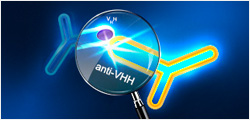| Species |
Human |
| Protein Construction |
IFN-ω (Cys24-Ser195)
Accession # P05000 |
|
| Purity |
> 97% as analyzed by SDS-PAGE
> 97% as analyzed by HPLC |
| Endotoxin Level |
< 1 EU/μg of protein by LAL method |
| Biological Activity |
Fully biologically active when compared to standard. The ED50 as determined by a chemotaxis bioassay using human TF-1 cells is less than 0.01 ng/ml, corresponding to a specific activity of > 1.0 × 108 IU/mg. |
| Expression System |
E. coli |
| Theoretical Molecular Weight |
20 kDa |
| Formulation |
Lyophilized from a 0.2 μm filtered solution in PBS, pH 7.4. |
| Reconstitution |
It is recommended that this vial be briefly centrifuged prior to opening to bring the contents to the bottom. Reconstitute the lyophilized powder in sterile distilled water or aqueous buffer containing 0.1% BSA to a concentration of 0.1-1.0 mg/ml. |
| Storage & Stability |
Upon receiving, this product remains stable for up to 6 months at -70°C or -20°C. Upon reconstitution, the product should be stable for up to 1 week at 4°C or up to 3 months at -20°C. Avoid repeated freeze-thaw cycles. |
| Target Background |
Interferon-Omega (IFN-ω) coded by IFNW1 gene in human, is a number of the type I interferon family, which includes IFN-a, IFN-β, and IFN-ω. The IFNAR-1/IFNAR-2 receptor complex can help with the signal transduction, followed the antiviral or the antiproliferative actions. IFN-ω is derived from IFN-a/β and share 75% sequence with IFN-a. It has two intramolecular disulfide bonds which are crucial for activities. Mire-Sluis et al have described bioassays for IFN-α, IFN-β, and IFN-ω that exploit the ability of these factors to inhibit proliferation of TF-1 cells induced by GM-CSF. The bioassays can be used also with Epo and TF-1 cells, or Epo and Epo-transfected UT-7 cells. |
| Synonyms |
IFN Omega; IFN-ω |
For laboratory research use only. Direct human use, including taking orally and injection and clinical use are forbidden. ��������

































